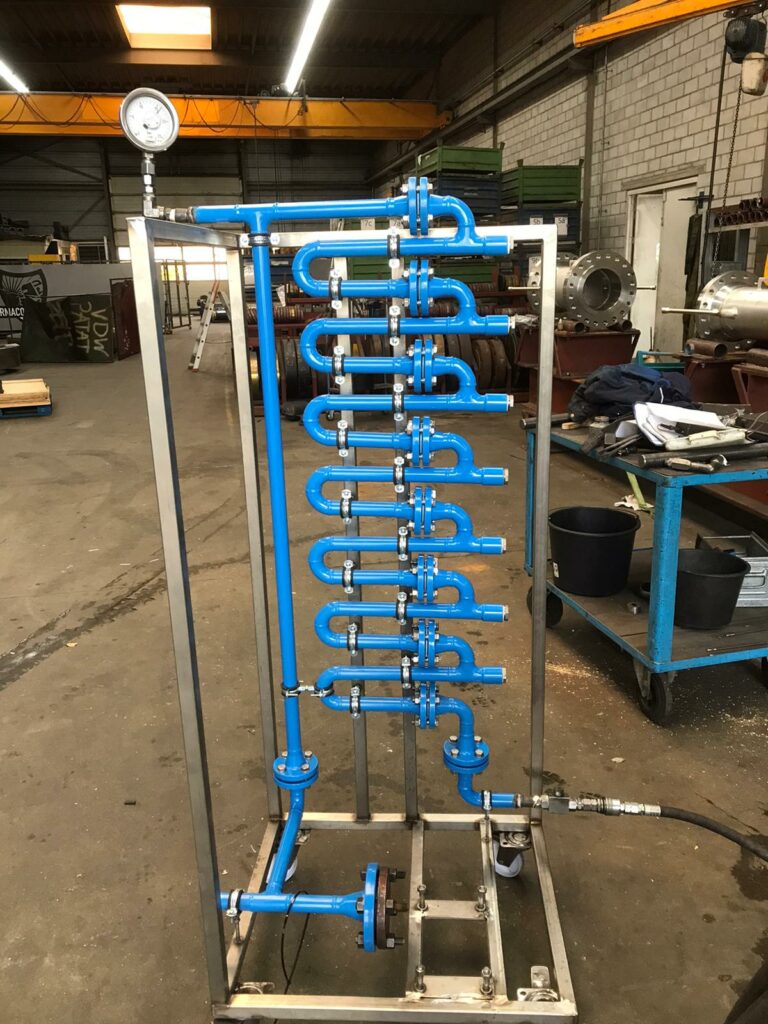Research and innovation
Despite being a centuries old concept, the specific methods to extract geothermal energy in The Netherlands are relatively new. Since the 70’s Earth’ deep (500 – 4000 m) subsurface layers have been exploited successfully for both heat as well as generation of electricity. However, due to the geologic heterogeneity across the world, there is a variety of different geothermal plays. Plays more or less similar to the ones in The Netherlands (matix-dominated, sandstone reservoirs between 1500 and 2500 m depth) are limited to several geothermal operations in Northern Germany and Albania.
The first Dutch geothermal doublet was realised in Westland (South-Holland province) in 2007. Subsequently, over 20 other projects were realised by 2020. With almost 40 new projects planned for the near-future, the geothermal industry is growing significantly. However, to keep growing, it is key to continue to invest in research and innovation. Several of the main bottlenecks for growth of the geothermal industry are detailed in the report Innovatie Roadmap Geothermie Nederland. Even though progress has been made, several severe bottlenecks still need to be optimized and carefully understood.
To contribute to the continuous growth of the geothermal sector as well as optimally support out customers, research and innovation is a key focus at Veegeo. Since it’s founding in 2012 Veegeo continuously conducts internal research and innovation projects, as well as contributing to sector-wide research programmes. Several of these research topics and programmes that Veegeo contributes to are listed below.
Internal research topics:
- Injectivity problems. The upward flow of production water from the deep reservoir via the production well leads to a drop in pressure and gasses coming out of solution. After heat is extracted at the heat exchanger in the surface facilities, the produced water is re-injected into the reservoir via the injection well. The degassing and cooling processes, however, lead to geochemical reactions such as pH-inbalance, scaling, and mineral precipitation. These reactions will negatively affect the injectivity. To mitigate these problems we investigate the (i) geochemical stability of the production water, and (ii) stimulation methods for injection barriers.
- Microbiology. Injection barriers can also be related to microbiology. Besides determining the origin of microbial activity, we research the effectivity of biocide and the impact of corrosion inhibitors. Furthermore, we also invest in developing the most effective treatment methods.
- Production models. Problems during geothermal production usually surface when it is too late. This can result in irreversible damage, leading to significant and costly consequences. Careful, periodic monitoring combined with precise data analyses will contribute to directly mitigating these problems. At Veegeo we continuously innovate, test, and optimize our production models, which are coupled to our own wells integrity management system (WIMS).
- CO2 en NOx storage in geothermal reservoir. A significant reduction of CO2 and NOx emission is necessary to reach targets se by the climate agreement. Besides limiting the emission-gasses at a geothermal operation, geothermal reservoirs can also be used for storage. Veegeo investigates different parameters to test the possibility of utilizing these storage techniques in Westland conditions.
- Seismic monitoring. Even though the occurrence of a felt event is almost nil, Veegeo is develops qualitative and quantitative methods to analyse activity related to geothermal operations. This is achieved by doing baseline measurements and monitoring of potential events coupled to well activity.
External research projects that Veegeo contributes to:
- DIMOPREC – Development of a well impairment model for predicting clogging of geothermal injection zones. TKI-Gas subsidy project together with Deltaris and TU Delft to investigate scaling by performing field analyses combined with numerical geochemical models. Veegeo contributes to this project by designing and developing a mobile side stream tool (SKID) and providing field data. Started in 2020.
- SUCCEED – Synergetic Utilisation of CO2 storage Coupled with geothermal EnErgy Deployment. A large research programme by a extensive consortium that is made up of multiple universities and industry-partners to investigate combining CO2-storage with geothermal energy production. Veegeo contributes by sharing practical experience and data. Started in 2020.
- EASYGO – Efficiency and Safety in Geothermal Operations. This is a large research program spanning multiple universities where 13 Ph.D. students will investigate different issues surrounding efficiency and safety related to geothermal operations. As industry-partner, Veegeo co-supervises two Ph.D. students and provides internships. Starts in 2021
- Microbiologie in geothermische putten. A research project funded by Kennnisagenda lead by Microbal Analyses to study the infuence and mitigation methods for microbiology in geothermal wells. Veegeo has contributed by sharing our practical experience as well as data. Finished in 2019.
- DESTRESS – Demonstration of soft stimulation treatments of geothermal reservoirs. An extensive research programme by a large consortium of several universities, institutes, and companies to examine stimulation techniques in geothermal reservoirs. As representative for Trias Westland, Veegeo had contributed with the successful drilling campaign to the Trias layer at 4000 m depth in Westland to analyse the reservoir potential. Finished in 2018.

